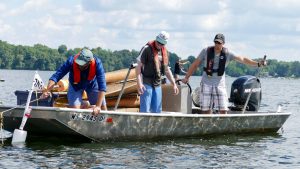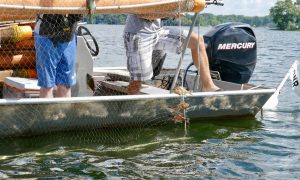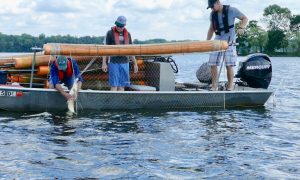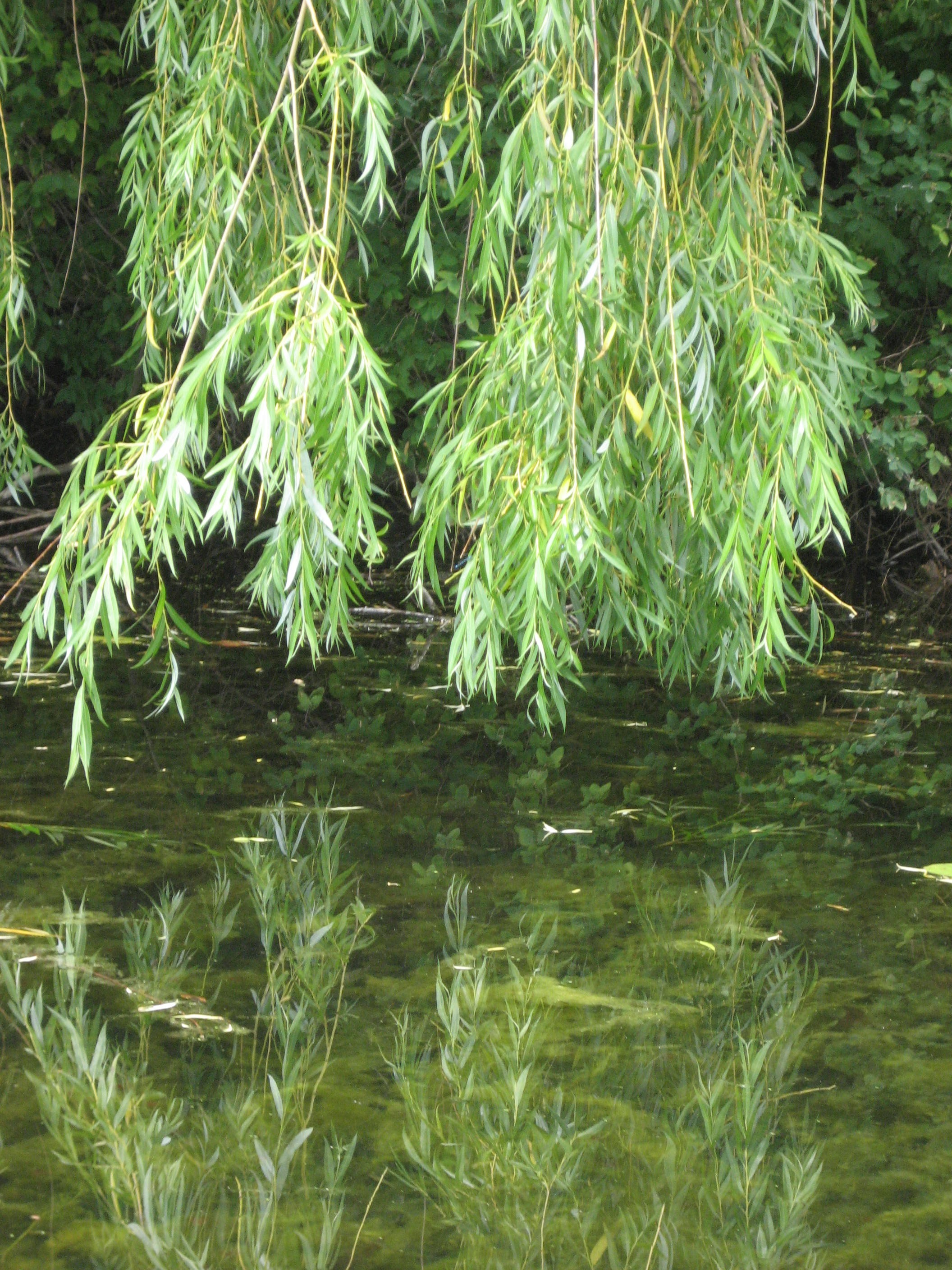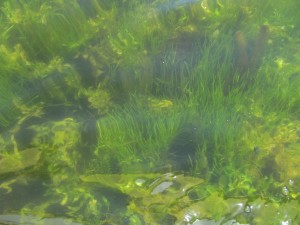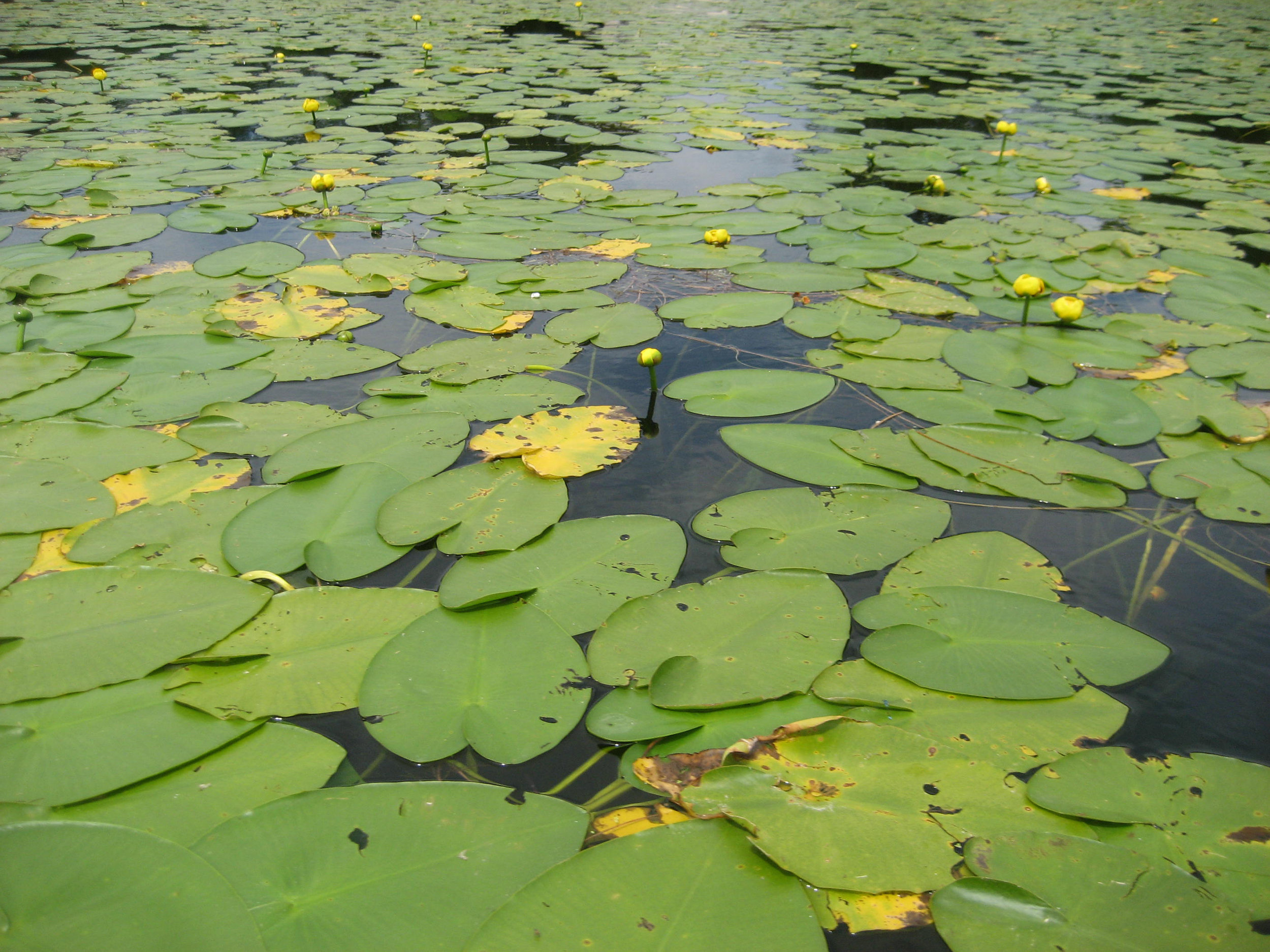Fish, Plants & Wildlife
Learn about the fish, plants and wildlife that make up the diverse ecosystem of the Lake Beulah area.
Walleyes
Lake Beulah has been designated as a sentinel lake for the Wisconsin Walleye Initiative (WWI), giving it a higher priority for walleye stocking and monitoring. The WWI stocking program is an unprecedented investment in walleye stocking via state and private hatcheries. The program is expected to result in stocking of fall fingerling walleyes across the state, which should produce fishable and, in some lakes, sustainable walleye populations for years to come.
Cisco
On August 23, volunteers from Camp Charles Allis, the Lake Beulah Protective and Improvement Association, a Madison fish research team and a Wisconsin Department of Natural Resources (DNR) crew used specialized netting to find out if any Cisco fish still live in the lake. Lake Beulah, being a deeper lake, is one of only a few southeast Wisconsin lakes that could support a population of Cisco fish. While the DNR knows that Cisco lived in the lake in the past, the last two attempts to find them proved unsuccessful and it is now believed there is no longer a population of Cisco in Lake Beulah as the water has warmed to the point the fish cannot survive. The Cisco is a deep and cold-water loving fish that cannot tolerate warmer waters. It can grow to around 20” in length.
The crew set out two sets of nets, one in the deepest part of the upper lake and one on the other side of the channel in about 50 feet of water. The nets are set vertically in deep water, with large floats at the surface. The size of the openings in the nets vary in order to trap different size fish. Nearly all the fish were dead upon being reeled up. After extricating them from the net, basic data was recorded. Netted species were crappie, large mouth bass, bluegill and one nice sized northern pike. Final survey results are pending.
Photos courtesy of Tom Bernhardt, Camp Charles Allis
Fishes of Wisconsin
by George C. Becker
Wood Duck Nesting Boxes
Many lake residents have noticed wood ducks along their shore and are interested in providing nesting boxes on their properties.
Here are some resources for more information on wood ducks and plans for boxes:
EEK! Environment Education for Kids (WI DNR)
Canadian Geese flying over Lake Beulah
Living with Wildlife: Canadian Geese
Management of Canada Goose Nesting
Wisconsin Turtle Conservation Program
A citizen-based monitoring initiative that allows the public to assist in recording and preserving turtles in Wisconsin.
Planting a Native Plant Butterfly Garden or Monarch Way Station:
Providing food and shelter for monarchs and other pollinators also helps conserve native plants, reduce habitat fragmentation and increase biodiversity in the landscapes.
Aquatic Invasive Species
Aquatic Invasive Species (AIS) in Wisconsin Invasive species are non-native plants, animals and pathogens whose introduction causes, or is likely to cause harm to the environment, economy or to human health. AIS can reduce or eliminate native species and recreational opportunities. AIS also can negatively impact real estate prices and the over-all economy.
Prevention
Do your part in preventing AIS from harming Lake Beulah!
Clean Boats, Clean Waters Program
Non-native Plants
(Click images for links to more information.)
Non-native Aquatic Species
(Click images for links to more information.)
The Mussel Monitoring Program of Wisconsin would like your help in finding out what mussels occur in your area!
Plants & Trees
Oak wilt is a fungal disease that can harm and kill oak trees. It is prevalent in Wisconsin and is spread from diseased to healthy trees by insect vectors or via connections between tree roots. Read More about Managing Oak Wilt.





